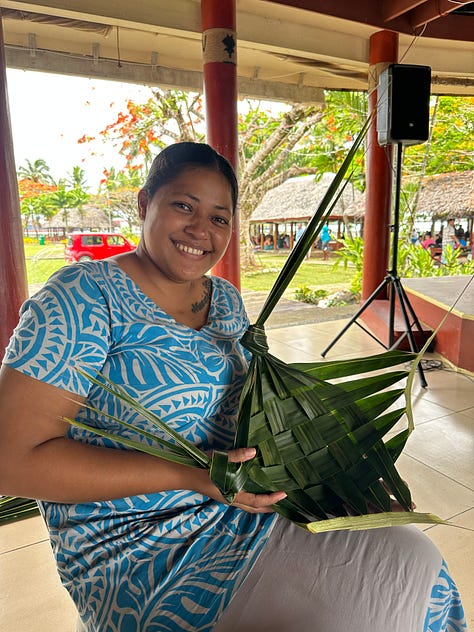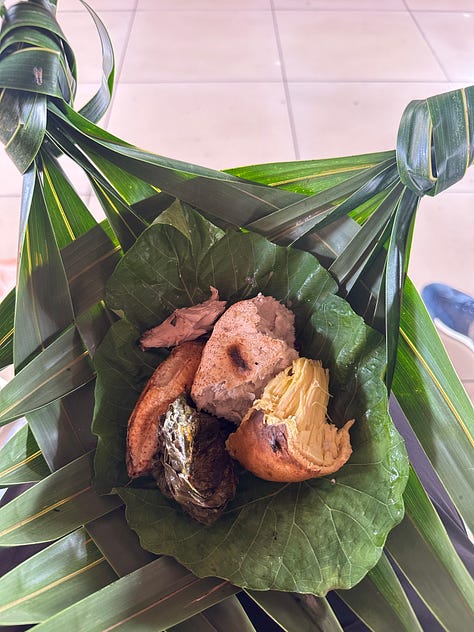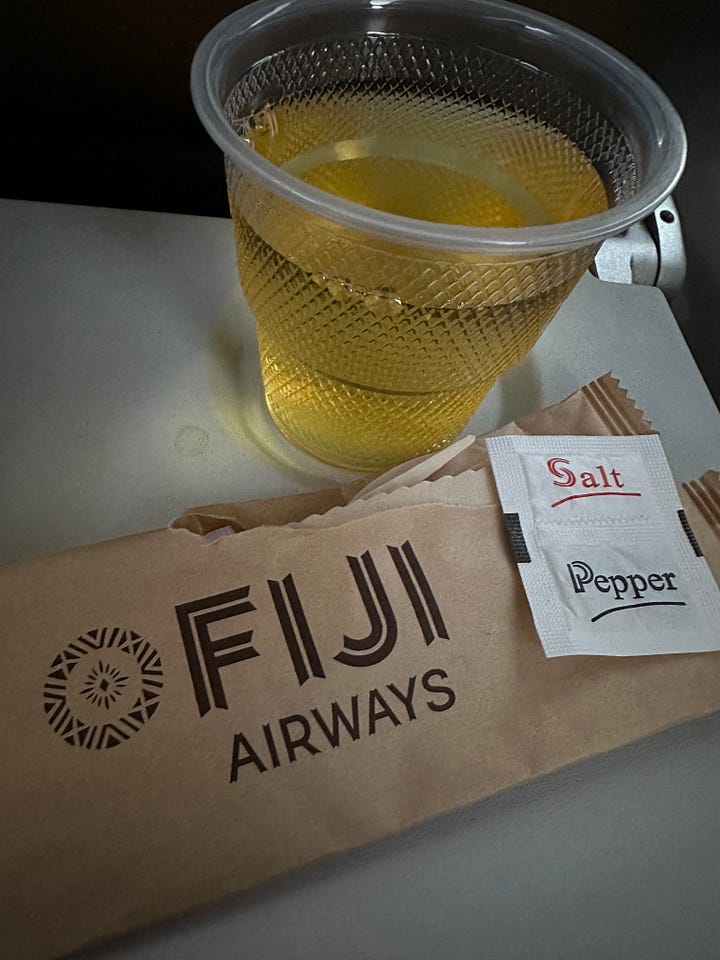Have you heard of the three moths and the fire story? This sufi tale describes, amongst other universal truths, the difference and depth of knowing versus theory. The first moth has read about the fire, the second returns with wounds of the fire that scathed it. The recounting that’s told from this perspective offers flavours of lived experience. In not returning, the third moth teaches about annihilation - the ultimate understanding of being one with the flame. I realized that in travelling (sometimes to places like Tuvalu, the least visited country in the world), unlike the swiping and surfing we often rely on, being out and about in the world fertilizes my living and learning, much like the second moth.
Reading about Samoan culture has been fascinating, but being able to witness some sacred ceremonies was special. The cultural centre offers a lovely little tour where local artists and traditions are open to being observed as they carry out their expressions. It began with some soothing serenades.
The first order of business was to learn how to weave palm leaves, after all, we needed to make our plate to enjoy the feast that was incoming!



The tanoa is a bowl that enables the ava (or kava) ceremony, a welcoming drink offered in many parts of the South Pacific (including in Vanuatu). Usually taking two weeks to carve, till today, these bowls are handmade so as to ensure that future generations continue this traditional trade.
The number of legs on the bowl are often equal to the number of family members and its circular shape serves as a reminder of the importance of this type of unified lifestyle.
It was amazing to see the emphasis in theory and practice, on the centrality of communal over individual living. In addition to the daily dealings of life, there are various special circumstances in which being together through an experience was expected in Samoa. I’ve been curious to see if and how communities upkeep this, particularly as they welcome in the modernity of today’s times.
Getting a tattoo was one of those ceremonies when having your partner and kids sit with you was a requirement. Laying on the ground for hours at end, the same Sula Ape black ink used by their ancestors continues to be employed. The malu (for women) and tatao (men) have similar designs. Costing approximately 5k Samoan Tala (approximately 1800 USD), these tattoos often extend from the waist to knees. Using the tapping method, it could take one to two weeks for it to be completed. As a sign of respect, hats and shoes were to be removed, everything occurred seated on the ground and photography in real time was not permitted.


This is a nation that puts family, social mores and cohesion first. It seemed unclear to me where and how intense individual identity or expression could fit in amongst this system, regardless, most all the folks I connected with seemed satisfied in their own ways.
Speaking of satiation, a highlight was to be a part of an umu.
The lads were animated in their sharing - yet remained adamant that rarely was there an alteration, especially with respect to roles and how this dish was prepared. When I asked about tweaking to today, the answer was simple: no trialing of new spices - after all, this was the way it was always done.
This pacific island way of cooking fish is scintillating and still same same, in spite of several shifts, including the advent of the spice trade.




As an ardent foodie, I was struck at their stance.
How far have we come where packets of spices are so easily available to us, yet served as precious modes of barter and trade some generations ago - what is the value of things that were once equivalent to gems yet are more mainstream now? In the ease to find and use spices then, I wondered why a fusion between yesteryears and today’s tasty recipes didn’t seem to take on mass appeal. Perhaps humans are creatures of habit …
I say this but then noticed that I visited the same stall in the loo as I’d used when I first arrived. I contemplated whether these were sub-, un- or fully conscious choices we make, or if it was a case of finding and feeling the familiar. Particularly during our travels, perhaps these are the little ways in which we can stay in some sort of routine.
As the lads danced in sync to close off the afternoon, it was evident that theirs was a routine that was well rehearsed indeed.
In Samoa, it’s obvious that reverence reverberates. Sometimes as we hustle however, seeing the sacred as part of our lives may come in parcels we’re not accustomed to noticing. It may serve us well then, to be on the look out for it!
May we see and savour the sacredness in and around us,






Very Hawaian!